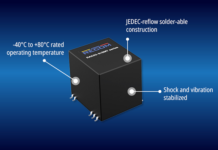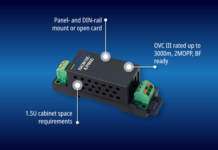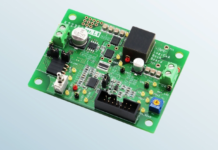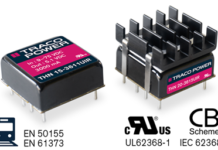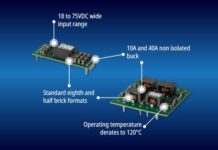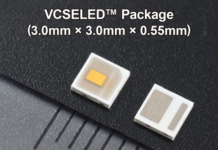
The STNRG012 is ST’s first digital multi-mode PFC controller for AC and DC input lines. It can drive LEDs in 90 W to 300 W applications while helping teams meet new efficiency goals set by regulators. Thanks to its distortion mitigation capabilities and multiple modes, the STNRG012 ensures designers can ship a smaller PCB, reduce cost, and increase efficiency and robustness. Moreover, the device can immediately switch from AC to DC sources, meaning it works with battery backups. Engineers can grab the EVL012LED to get started rapidly and experiment with a 200 W LED system.
The advantages of a digital device
A familiar and flexible framework

The STNRG012 is an alternative to the STNRG011. They share many identical features, but the older model only supports AC input lines. Hence, those with STNRG011 experience will find it easy to work on the STNRG012. The new device is also a testament to the success of the STNRG011 and the need to use it in more applications. One reason behind its popularity is the need for a digital approach, which provides greater granularity. Instead of dealing with a complex mix of analog components, developers load code to the device’s non-volatile memory (NVM). Communication takes place using a two-pin UART interface and allows teams to define various PFC and LLC parameters, among others.
A new THD optimizer
Developers can use the NVM to enable, disable, and configure algorithms. The STNRG011 and STNRG012 both use traditional constant on-time (COT) and enhanced constant on-time (ECOT) algorithms, which control the power factor correction and help improve efficiency. They also provide ramp ECOT (RECOT), which helps reduce the EMI filter. However, the STNRG012 provides a new algorithm that optimizes total harmonic distortion and is particularly useful in lighting applications. The THD optimizers adjust thresholds based on the phase of the AC and the PFC mode to better tailor performance and improve efficiency.
The realities of working on a lighting application
A new architecture
The multi-mode approach of the controller aims to help engineers looking to consolidate features. Instead of using two devices, teams only need one STNRGxxx component. And with the STNRG012, designers can now work more efficiently on lighting systems thanks to its updated architecture. For instance, the STNRG011 comes with an X-cap discharge capability. Put simply, when removing the plug from the mains, the system discharges the capacitor. However, this is unnecessary for lighting systems. Moreover, by removing this feature from the STNRG012, we ensure that the device can rapidly switch from AC to DC input lines. Hence, the STNRG012 showcases the same integration efforts previously found in the STNRG011 but tailors its architecture to new systems.
Exhaustive development environment
The fact that the non-volatile memory opens the door to many customizable options also means that it’s critical to provide an intuitive way to access and configure the various options. Hence, ST released a graphical user interface for the STNRG012, the STSW-STNRG012GUI. Beyond opening the NVM parameters, it provides calibration features and logs for various faults and events. The GUI uses an STEVAL-PCC020V2 interface board and the EVL012LED demo board. The whole stack thus provides a quick way to create a proof-of-concept, test features, prototype, and more.

A glance at the documentation for the evaluation board shows what values developers can change in the NVM to set up the constant on-time algorithm (section 1.1). Furthermore, the application note has an entire section on current dimming to assist engineers working on lighting applications. Depending on the type of application, the process can vary significantly. The section thus helps teams walk through settings and connections to hasten developments. It also includes a bill of materials and an exhaustive list of NVM parameters so developers can study our implementation and write their applications faster.

For more information visit ST Blog Here.




